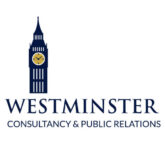Executive Summary
The global media ecosystem in 2025 is more fragmented than ever. Traditional outlets face declining trust, digital platforms wrestle with regulatory pressures, and audiences increasingly consume news through micro-communities and algorithmic feeds. Drawing on the Reuters Institute Digital News Report, the Edelman Trust Barometer, and comparative analysis from international policy institutes, this report outlines the forces reshaping trust, regulation, and influence. For Westminster clients, the implications are clear: credibility and adaptability in communications strategies are now as important as visibility.
Introduction
Media has always been central to shaping political debate, but the landscape has shifted radically. Audiences are no longer passive consumers but active gatekeepers, curators, and skeptics. While major outlets retain influence, younger demographics and politically polarized societies increasingly rely on social feeds, influencers, and closed messaging platforms.
This shift has created both risks and opportunities. On one hand, misinformation and “news deserts” weaken democratic discourse. On the other, new digital formats offer avenues for direct engagement, creative storytelling, and measurable impact. Understanding how trust is earned, where regulation is tightening, and how audiences are fragmenting is essential for organizations navigating politics, business, and advocacy in 2025.
Trust: Fragile but Recoverable
Trust in news remains low globally, according to the Reuters Institute. Yet, as the Edelman Trust Barometer shows, trust in business and NGOs often exceeds trust in media and government—suggesting that organizations can step into credibility gaps if they communicate transparently.
Audiences reward institutions that disclose funding sources, correct errors openly, and provide verifiable data. The lesson for Westminster
clients is that credibility can be deliberately built: through radical transparency, partnerships with trusted validators, and audience dialogue rather than one-way messaging.
Regulation: Platforms in the Spotlight
Governments are tightening rules on digital platforms, from the EU’s Digital Services Act to new regulatory frameworks in Asia and the Middle East. The regulatory landscape is converging on a few themes: content accountability, algorithmic transparency, and stronger privacy protections.
For businesses and NGOs, this means communications strategies must account for compliance while also preparing for greater public scrutiny of how they target audiences and manage data. PR campaigns that ignore these shifts risk reputational damage and even legal penalties.
Audience Fragmentation: From Mass Media to Micro-Publics
The biggest challenge for communicators in 2025 is audience fragmentation. Communities increasingly gather in niche spaces: private Telegram channels, Discord groups, or influencer-led newsletters. This makes traditional “broadcast PR” less effective.
Smart organizations are mapping micro-publics, tailoring campaigns to each, and engaging in two-way communication. Measurement now focuses less on raw reach and more on engaged trust metrics—completion rates, dialogue volume, and shareability.
“Reputation is no longer built in the newsroom—it’s built in the feed, the group chat, and the community forum.”
Conclusion
The media landscape of 2025 is not just a communications challenge—it is a strategic environment that shapes policy, business, and social outcomes. By understanding the interplay of trust, regulation, and fragmentation, Westminster Consultancy can help clients not only avoid reputational pitfalls but also seize opportunities to lead with credible, resilient narratives.

